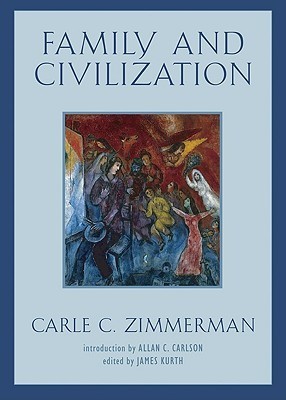What do you think?
Rate this book


425 pages, Paperback
First published January 25, 2008
“There are wider possibilities of types of civilization under the domestic family, than under the trustee type…
“It is no accident that world religions and decent strong governments are the handmaidens of great civilizations. The world’s great civilizations have been those where first religion and then government has controlled the trustee family, taken over its nonfamily functions, and given the domestic family and the free individual a chance to develop.”
“A decay in familism is a decay in the social system of biological reproduction. Consequently those societies in which familism has decayed are those that are themselves decaying—and very rapidly. The decay of the family becomes a fundamental “cause” or vehicular agent for the further decay of the society…This is exactly what happened in Greece and Rome in the later periods, and this is exactly what is happening in our Western society today. No amount of hemming and hawing, or hiding our heads like ostriches, can disguise this fact.”